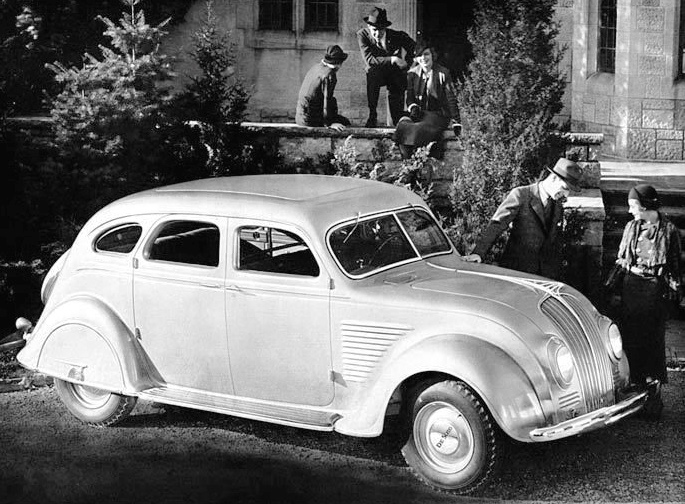Generally speaking, the most abrupt, drastic redesigns could be found around model years 1934 and 1949. For 1934 or thereabouts, squared-off bodies with distinct components such as headlights, fenders and so forth were replaced by redesigns that retained such components, but in softer forms harking to streamlining. From then until shortly after World War 2 the streamlining concept continued while those components became less distinct as bodies became more integrated. The first postwar redesigns yielded the highly integrated "envelope" shapes that became the basis for the norm ever since.
As dealt with in my book "How Cars Faced the Market: Grille Design Continuity," some brands such as Cadillac, Packard and Buick tended to preserve grille style themes from one design to its redesign, thus softening the impact of the change. Pontiac did the same for many years by continuation of its "Silver Streak" chromed hood stripes. I wrote about Chrysler Corporation's 1949 redesign here, and discussed grille treatment carryovers.
The present post has examples of the most dramatic styling changes found during that period and a while beyond. As usual, images are factory publicity or cars listed for sale.
1933 LaSalle
Final model year before a new design was introduced. It incorporates some facelifting touches such as skirted front fenders, a V'd grille, a slightly raked-back windshield, and a touch of rounding on basic body features. Still, the design isn't much removed from 1920s practice.
1934 LaSalle
The redesign. By 1935 or 1936 most American cars had been given the more rounded, quasi-streamlined appearance of this LaSalle. This marks a strong break from previous American sedan designs, but not a revolutionary break.
1948 Chevrolet
Here is another example of a design break that's clearly distinctly different, but not really drastic. The body design of this Chevrolet first appeared in 1940 and was given facelifts since.
1949 Chevrolet
Chevrolet's postwar redesign. Clearly a different feeling, but not extremely so, given that the prior body was already partly integrated.
1933 DeSoto
Now for some of those drastic redesigns. This 1933 Desoto's basic body is very 1920s abaft of the A-pillar, but was facelifted in the form of a raked windshield, a rounded grille and puffier front fenders.
1934 DeSoto Airflow
The 1934 DeSoto Airflow is indeed drastically changed.
1948 Nash
Now for three Nashes. The 1948 model shown here is a pleasant looking facelift on a prewar body.
1949 Nash
The redesign was radical, having the flavor of prewar imaginings of the postwar "car of the future" molded by aerodynamics. Aside from the hood ornament and badges, '49 Nashes bore no resemblance to the '48s. To my mind, the stylists went to too great an extreme.
1952 Nash
Nash management quickly realized that the 1949 design was on a trajectory removed from mainstream taste as defined by General Motors. Now we find a boxy design that's still heavier looking that it ought to be. The main carryover feature is the covered front wheels. The grille outline and frontal lights are nearly the same.
1947 Hudson
The body design seen here first appeared for the 1936 model year and was heavily facelifted over time. Note the cross-section profile at the B-pillar: clearly out of date even when compared to the '48 Chevrolet and Nash pictured above.
1948 Hudson
Hudson's 1948 redesign was totally new.
1949 Kaiser
Kaiser was a brand created after the war, and its body is an example of the "envelope" type. Unfortunately, the styling was rather plain and bulky-looking, especially when compared to postwar designs from Studebaker, Hudson and the General Motors line.
1951 Kaiser
In compensation, the new 1951 Kaisers were lithe and sleek.
1946 Mercury
1948 Mercurys were nearly identical to the '46 model seen here. Once again, it's a facelifted prewar design.
1949 Mercury
Mercury's postwar redesign was sleeker and more rounded: a major character revision. The carryover detail is the vertical grille bars.
1952 Mercury
But the '49 style didn't jibe with the emerging fashion for a more boxy appearance, so Mercurys again changed their design character.
















1 comment:
The 1955 Dodge Coronet was a revision of the 1949-54 style, the hood and fenders looks less bulbous.
Post a Comment